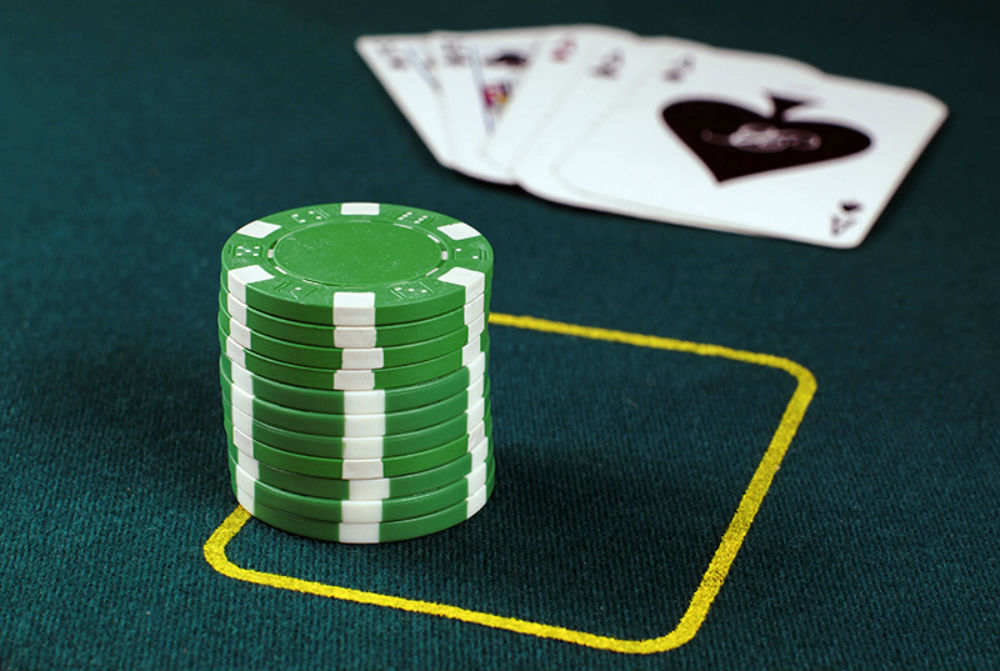Blackjack is a fairly simple game with relatively good odds. That’s the main reason it’s so popular all over the world. It’s easy to get into and pretty hard to get out of. While the house has the edge here, it’s entirely possible to come out ahead of a blackjack game. If you’d like to get into it, here’s a beginner’s guide that covers the rules, primary strategies and the terminology – an easy way to learn to play blackjack for beginners.
Score in blackjack
Being one of the easiest kasyno games, the only thing that matters in blackjack is the value of a card. Suit type only matters in rare cases and with different kinds of blackjack.
The score is as follows:
- Ace – either 1 point or 11 points
- Face Cards – 10 points
- The other cards are worth their value in points, e.g. a 2 is worth 2 points.
A hand consists of two cards’ score combined. One with the higher hand total takes the pot.

How a round is played
First, the dealer gives you and himself two cards. His one card is face-up, so that gives you extra information as to what you should do next. Now, if either one of you has a blackjack, the round is over. If you win, you take the pot. You don’t – dealer gets it. Simple enough, right?
Now, obviously, neither you nor the dealer will be able to hit a blackjack each round. If neither of you has it, you can either stand, hit, or split.
Stand – that’s what happens if you don’t decide to take any additional cards. If you have the score of, say, 19, it’s much more viable to stand. It’s a pretty low chance to get a 2 and ultimately get a blackjack, and a much higher chance of going over 21 and busting.
Hit – that’s taking additional cards. If you’ve got a low score, then that’s what you want to do. I’ll discuss the exact strategies later.
Split – splitting is a bit more complicated. It consists of taking the two cards you have and splitting them into two separate hands. If you’ve got two Queens and choose to split, you get two hands with a Queen in each, and the dealer gives you additional cards. Splitting acts as two different bets, so you can win both of them, lose both of them or win one and lose one. To split, you’ll need to place an additional bet, too.
Double Down – that’s just doubling your bet and taking an extra card.
Surrender – that’s sacrificing half of your bet and backing out of a round. It’s rare for the casinos to let you surrender before the dealer checks his card. A much more common option is the so-called late surrender where you get the possibility to back out after the dealer checks his card.
Now, dealers also have a set of rules they always follow. The players can execute any of the possible five moves. No matter what cards players have, dealers are obliged to hit anything that’s 16 or lower.
They also have to stand on anything that’s 18 or higher.
But the dealer has the advantage of acting as the last one. Even if he busts eventually, but you bust first, you lose. He can’t make any decisions, though, which gives you a bit of an edge. He always plays by the rules.
Basic strategy
There are some basic principles that you should follow. They’re pretty easy to learn or even figure out for yourself:
- Always stand if your hand is 12-16 and the dealer has 2-6
- Hit if your hand is 12-16 and the dealer has 7-Ace,
- Always Split Aces and 8s
- Double or hit Ace-6
- Always double 11
By sticking to those rules, you can cut the casino’s edge by quite a bit.
Blackjack as the most “profitable” game
Blackjack offers one of the lowest house edges of all the games. If you stick to the strategy, you can achieve as low as 0.5% edge. That means that, in the long run, statistically, the casino is 0.5% ahead of you. Other games such as slots are preprogrammed to run at 15% edge. If you’re to play for a long enough time, you’re certainly going to lose your money.
With blackjack, it’s a little bit different. The edge is low, so it’ll take longer for you to go bankrupt. You have a higher chance to win, as well.
If you have a budget of $100 per hour, then it means that, statistically, you’ll lose only $0.5. Comparing it with for example keno, which has 40% house edge, you’d lose $40 after the hour has passed.
There are many advanced techniques that can allow you to remove the house edge altogether, but they’re quite complicated. Using this simple set of rules sets the edge at about 0.5%, which is not too shabby for beginners. If you want to try your chances at a blackjack table, now you can do it successfully.